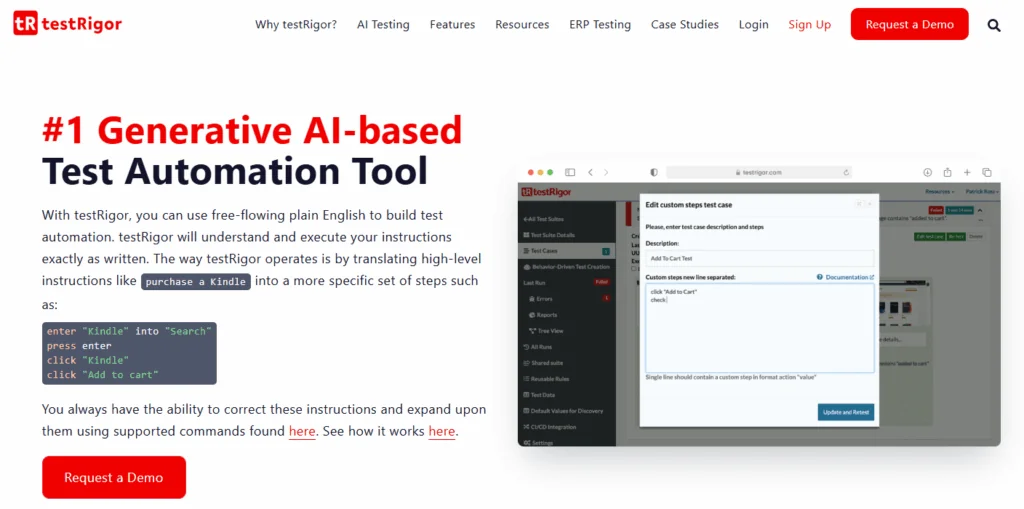Educational chatbots are transforming how students learn by providing instant answers, personalized guidance, and round‑the‑clock support. From tutoring and quiz assistance to language learning, these AI‑powered tools are now a critical part of modern e‑learning ecosystems. However, ensuring their accuracy, responsiveness, and reliability is vital, errors or poor interactions can undermine trust and disrupt the learning experience. This is where automated testing becomes essential. By leveraging free AI testing tools, educators and developers can validate chatbot performance efficiently, reduce manual testing efforts, and maintain consistent quality even with frequent content updates. The result: smarter, more dependable chatbots that enhance learning outcomes.
Why Educational Chatbots Need Rigorous Testing
Educational chatbots are powerful tools for enhancing learning, but their effectiveness depends on consistent accuracy, reliability, and adaptability. Without proper testing, even minor flaws can disrupt the learning experience and reduce student trust.
Ensuring Accuracy and Trust
Educational chatbots act as virtual tutors, answering questions and guiding students through lessons. Inaccurate responses or unclear instructions can mislead learners and erode trust in the tool. Since students often rely on these bots for assignments or exam preparation, maintaining accuracy is critical to achieving positive learning outcomes.
Handling Dynamic Educational Content
Curriculum changes, new teaching strategies, and evolving user needs mean that educational chatbots must be updated frequently. Each update introduces the risk of new bugs or broken dialogue flows. Without rigorous testing, these issues can go unnoticed, negatively affecting user experience and credibility.
Managing High Usage and Diverse Scenarios
Chatbots must function reliably during peak hours and handle queries from diverse learners across multiple platforms. Load failures or misinterpretations can disrupt the learning process. Rigorous testing ensures scalability, performance stability, and inclusive user interactions.
Role of Automated Testing in Chatbot Development
To meet the demands of modern e-learning, chatbot development must balance speed with reliability. Automated testing, using the right tools, bridges this gap by streamlining validation, reducing errors, and ensuring chatbots remain effective as they evolve.
Accelerating Quality Assurance Cycles
Educational chatbots need frequent updates to align with evolving curricula and learner feedback. Automated testing allows QA teams to validate these changes rapidly, reducing the time between development and deployment. Instead of spending hours on repetitive checks, tests run in the background and flag issues instantly.
Ensuring Consistent User Experience
Chatbots must deliver uniform responses across devices, platforms, and languages. Automated tests simulate diverse user interactions, ensuring that the chatbot behaves predictably whether accessed via a mobile app, web portal, or learning management system.
Supporting Scalability and Continuous Improvement
As the chatbot scales to serve hundreds or thousands of learners, manual testing becomes impractical. Automation enables scalable validation of dialogue flows, API integrations, and NLP accuracy, making it easier to maintain quality during expansion and experimentation with new features.
Free AI Testing Tools for Chatbots
Automated testing tools are essential for validating chatbot performance at scale. For educational chatbots, free AI-powered solutions provide cost-effective ways to ensure quality without heavy investment – ideal for schools, startups, and small development teams. Below are some of the most effective tools.
testRigor
Overview: testRigor is a no-code, AI-powered testing platform that allows teams to create automated tests in plain English. Its simplicity makes it accessible even to non-technical educators.

Key Features: Natural language test scripting, cross-platform compatibility, and seamless integration with CI/CD pipelines. It can test chatbot dialogues, response accuracy, and user flows without coding effort.
Why Use It: Perfect for teams needing quick setup and continuous validation of frequently updated chatbot content.
Selenium IDE (with AI Extensions)
Overview: Selenium IDE is a popular browser automation tool, and with AI plugins, it can be extended to test chatbot interactions on web-based platforms.
Key Features: Record-and-playback testing, multi-browser support, and customizable AI-driven scripts to validate chatbot responses.
Why Use It: Ideal for developers familiar with browser testing who want to adapt their workflow to chatbot scenarios.
Botium (Free/Open Source)
Overview: Botium is specifically designed for testing conversational AI, making it highly relevant for chatbot QA.
Key Features: Dialogue flow validation, NLP accuracy testing, multi-channel support (Messenger, WhatsApp, etc.), and open-source flexibility.
Why Use It: Suited for teams needing in-depth conversational testing and compatibility with multiple messaging platforms.
Leveraging these tools helps educational chatbot developers maintain quality, reduce errors, and create reliable learning companions without incurring high costs.
Rasa Test Framework (Free/Open Source)
Overview: Part of the Rasa open-source ecosystem, this framework allows automated testing of conversational flows built with Rasa.
Key Features: End-to-end conversation testing, intent validation, and story-based test automation to ensure predictable responses.
Why Use It: Ideal for developers building educational chatbots using Rasa who want native, integrated testing capabilities without extra cost.
To read about more listed tools, refer to this blog.
Final Thoughts
Educational chatbots are becoming vital tools for modern learning, but their effectiveness depends on accuracy, reliability, and adaptability. Automated testing powered by free AI tools bridges the gap, ensuring these bots deliver consistent value even as curricula evolve. By leveraging solutions like testRigor, Selenium IDE, Botium, and Rasa, developers and educators can validate chatbot performance without heavy costs. This not only improves user trust but also enhances learning outcomes and scalability. As e-learning expands, adopting automated testing isn’t just a technical choice—it’s an essential strategy for building smarter, more dependable educational experiences.














Discussion about this post